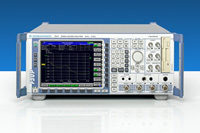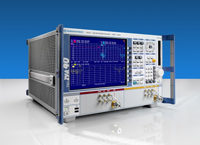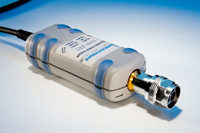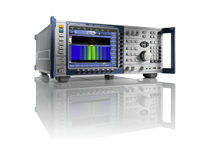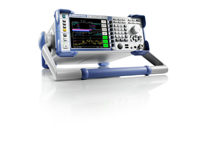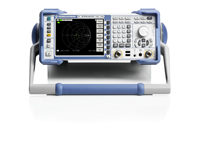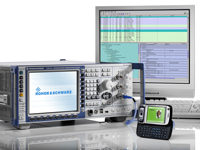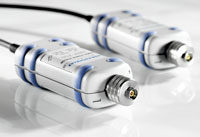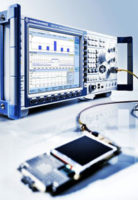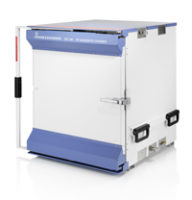Company Profile
The Rohde & Schwarz technology group develops, produces and markets a wide range of electronic capital goods. With its extensive product portfolio, the company makes an important contribution to a safer and connected world. In the test & measurement, secure communications, networks & cybersecurity and broadcast & media markets, customers worldwide rely on Rohde & Schwarz and its cutting-edge solutions. In addition to its established business fields, Rohde & Schwarz has made substantial investments in future technologies such as artificial intelligence, the industrial internet of things (IIoT), 6G, cloud solutions and quantum technology.
Rohde & Schwarz is a market-leading supplier in the mobile and wireless communications sector, offering a comprehensive portfolio of T&M instruments and systems for the development, production and acceptance testing of components and consumer devices. Other important T&M markets include the automotive industry, the aerospace & defense sector, all industrial electronics segments as well as research and education.
Rohde & Schwarz has an extensive sales and service network and is present in more than 70 countries, primarily with its own subsidiaries. Sales outside Germany account for 85 percent of worldwide revenues. Headquartered in Munich, Germany, the company has strong regional hubs in Singapore and Columbia, Maryland to coordinate business activities in Asia and the USA.
Contact Information:
Location:
Downloads
How to Select an Analog Signal Generator
Today's microwave and wireless communications market is expanding at an incredible rate, thus increasing the need for test equipment that will help verify the performance of devices and systems. A flexible tool for a broad scope of applications is the signal generator because of its wide frequency range, high output power and variety of modulations. For example, signal generators with a minimum frequency of 9 kHz permit applications in EMC measurements. Frequency coverage up to 12.75 GHz covers ISM bands as well as all important mobile radio bands. Microwave signal generators may cover or support frequencies up to 20 GHz, 40 GHz and even 110 GHz.
DownloadRadar Waveforms for A&D and Automotive Radar
This White Paper provides a view on radar waveforms for Aerospace and Defence and commercial radar systems. Waveforms such as pulse and pulse-Doppler signal, continuous wave and frequency shift keying waveforms are described. It also shows continuous waveform trends designed for specific needs and application differences of continuous wave radar compared to pulse radar systems.
DownloadTesting S-Parameters on Pulsed Radar Power Amplifier Modules
This Application Note describes testing S-parameters under pulsed conditions. A constant power level calibration is included. A LDMOS S-band radar power transistor is used as example DUT. The pulse profile mode of the R&S ZVA is used to analyze the time-dependent behavior of the DUT.
DownloadTest Automation Tool for POLQA and PESQ Speech Quality Tests
This application note provides an application program for level alignment, test automation and reporting with PESQ and POLQA on the Audio Analyzer R&S UPV or R&S UPV66. An introductory section explains theoretical background, gives application hints and defines requirements for test signals.
DownloadIQWizard - IQ Signal Measurement and Conversion
IQWizard is a tool for loading IQ signal files in various formats and measuring IQ signals with a FSx spectrum analyzer or ESx Receiver. The obtained IQ data in memory can be stored in various formats or be transmitted to an AMU / SMU with WinIQSIM™ or WinIQSIM2™.
DownloadHow to utilize the I/Q Software Interface of the R&S RTO Oscilloscope with MATLAB
This application note presents the I/Q Software Interface (R&S K11 option) of the R&S RTO in the context of remote applications. It demonstrates the basic operation, application examples, and an analysis in MATLAB.
DownloadOverview of Tests on Radar Systems and Components
The scope of the subject “radar” has expanded in the recent years in terms of its technical evolution and spreading of applications. This application note along with its corresponding white paper 1MA207 show how to use the R&S radar product portfolio to tackle test and measurement tasks in modern radar technology. Target groups are students who want to become familiar with radar issues as well as radar professionals who want to solve certain test and measurement tasks.
DownloadRemote Operation of Windows Based T&M Instruments with Apple iPad
This document describes how a Windows®-based R&S® T&M instrument is remotely operated by an Apple iPad* as if working on it locally. Step-by-step procedures are provided for setting up and configuring the T&M instrument and the iPad. On the iPad, a special App implements the Windows® "Remote Desktop" functionality. T&M instrument and iPad are connected via WLAN (also denoted as Wi-Fi network).
DownloadHigher Order MIMO Testing with the R&S SMW200A Vector Signal Generator
Due to its outstanding performance the R&S SMW200A vector signal generator is ideal for testing MIMO receivers in a vast variety of applications offering maximum usability at minimum form factor. It can generate up to eight antenna signals simultaneously in its digital baseband – all standard-compliant and with antenna-specific coding. In addition, it can simulate the complete MIMO transmission channel with up to 16 fading channels, sufficient to emulate higher-order MIMO configurations such as 3x3, 4x4, and 8x2.
DownloadAdvanced Signal Analysis using the History Mode of the R&S RTO Oscilloscope
Rare faults and intermittent signals are difficult to capture. The R&S®RTO Oscilloscope supports the acquisition and the detailed signal analysis of these signals by using the history mode. The history mode allows the user to look back to previous acquisitions and apply the wide set of analysis functions of the RTO. Furthermore it stores the accurate recoding time of the waveforms for subsequent analysis.
DownloadDevelopment Hints and Best Practices for Using Instrument Drivers
The aim of this application note is to provide information regarding Rohde & Schwarz instrument drivers. This paper shall help application engineers and software developers to easily get an understanding of advanced techniques to develop test and measurement (T&M) applications by utilizing Rohde & Schwarz instrument drivers. Furthermore the nomenclature used for Rohde & Schwarz instrument drivers will be explained.
DownloadLTE Downlink MIMO Verification with R&S SMU200A and R&S FSW
Multiple Input Multiple Output (MIMO) is an integral part of LTE. Vector signal generators and signal & spectrum analyzers from Rohde & Schwarz support LTE measurements with up to 4 antennas. This Application Note covers 2x2 MIMO in the LTE downlink. Remote control programming is demonstrated by examples for a free-of-charge program.
DownloadMulti-port calibration by using a two port calibration unit
Performing a multi-port calibration of a vector network analyzer (VNA) is straight forward by using either a calibration unit with the corresponding numbers of ports or single calibration standards. This paper shows how to perform a n-port multi-port calibration by using calibration unit with a lower number of ports than available of the vector network analyzer.
DownloadBluetooth Low Energy Measurements Using R&S CBTgo Additional Tests
Nearly all tests in accordance with the Bluetooth low energy test specification V4.0 [1] can be performed using the R&S® CBT alone. Some tests additionally call for signal generators to provide interference signals. This application note describes the tests performed with additional equipment and presents straightforward solutions based on the R&S® CBTgo software.
DownloadBluetooth Measurements Using R&S CBTgo: Additional Tests
Nearly all tests in accordance with the test specification* can be performed with the R&S® CBT alone. Some tests additionally call for signal generators to provide interference signals and also require spectrum analyzers. This application note describes the tests performed with additional equipment and presents straightforward solutions based on the CBTgo software.
DownloadHow to utilize the I/Q Software Interface of the R&S RTO Oscilloscope with MATLAB
This application note presents the I/Q Software Interface (R&S K11 option) of the R&S RTO in the context of remote applications. It demonstrates the basic operation, application examples, and an analysis in MATLAB.
DownloadOscilloscope Fundamentals
The oscilloscope is arguably one of the most useful tools ever created for use by electronic engineers. In the more than five decades since the modern analog oscilloscope was created, hundreds of useful documents and thousands of articles have been written about what it is, how it works, how to use it, and application-specific examples of the oscilloscope in action. It is the purpose of this primer to instead describe digital oscilloscopes, which have for practical purposes replaced their analog predecessors in the vast majority of applications.
DownloadIntroduction to Radar System
This White Paper provides a general overview of different military and commercial radar systems. It also covers some typical measurements on such systems and their components.
DownloadT&M Solutions for software Defined Radios (SDR)
This white paper presents the basic idea behind software defined radio (SDR) and provides an overview of the Rohde & Schwarz radios and further details of SDR test and measurement solutions offered by Rohde & Schwarz.
DownloadOverview of Tests on Radar Systems and Components
The scope of the subject “radar” has expanded in the recent years in terms of its technical evolution and spreading of applications. This application note along with its corresponding white paper 1MA207 show how to use the R&S radar product portfolio to tackle test and measurement tasks in modern radar technology. Target groups are students who want to become familiar with radar issues as well as radar professionals who want to solve certain test and measurement tasks
DownloadNear Field Communication (NFC) Technology and Measurements
Near Field Communication (NFC) is a new short-range, standards-based wireless connectivity technology, that uses magnetic field induction to enable communication between electronic devices in close proximity. Based on RFID technology, NFC provides a medium for the identification protocols that validate secure data transfer. NFC enables users to perform intuitive, safe, contactless transactions, access digital content and connect electronic devices simply by touching or bringing devices into close proximity. This White Paper gives an overview of NFC uses, NFC technology and signals, RF measurements on NFC units and shows some examples of measurement results using R&S test instruments and special R&S NFC software tools.
DownloadWLAN 802.11n: From SISO to MIMO
New wireless applications demand ever increasing data rates from both cellular and noncellular networks. To satisfy these needs in noncellular networks, the IEEE 802.11 (WLAN) standard - the most commonly used standard for wireless local area networks today - is continually being extended. This application note discusses WLAN standard IEEE 802.11n. It first describes the most important amendments to previous releases and the ambitious new measurement tasks. Then, it describes how to deal with these tasks using Rohde & Schwarz instruments. The main focus here is on transmission over several TX and RX antennas (MIMO). Building multistandard signals using Rohde & Schwarz generators is also described. Screenshots from the analyzer taken on 802.11n signals complete the document.
DownloadLTE Transmission Modes and Beamforming
Multiple input multiple output (MIMO) technology is an integral part of 3GPP E-UTRA long term evolution (LTE). As part of MIMO, beamforming is also used in LTE. This white paper discusses the basics of beamforming and explains the eight MIMO transmission modes in LTE Release 9.
Download802.11ac Technology Introduction
This white paper provides a brief technology introduction on the 802.11ac amendment to the successful 802.11-2007 standard. 802.11ac provides mechanisms to increase throughput and user experience of existing WLAN and will build on 802.11n-2009.
DownloadLTE Release 9 Technology Introduction
The LTE technology as specified within 3GPP Release 8 was first commercially deployed by end 2009. Since then the number of operators implementing the technology is strongly increasing around the globe. LTE has become the fastest developing mobile system technology. The same way GSM and WCDMA have been enhanced with additional features over time, LTE is continuously worked on. Initial enhancements have been included in 3GPP Release 9 and are described in this white paper.
LTE Beamforming Measurements
Multiple input multiple output (MIMO) technology is an integral part of 3GPP E-UTRA long term evolution (LTE). As part of MIMO, beamforming is also used in LTE. This application note provides a brief summary of the transmission modes (TM) in LTE and describes the beamforming measurements for base stations (BS) and user equipment (UE). The T&M options using various Rohde & Schwarz instruments are also presented.
DownloadTETRA Measurements
TETRA, the TErrestrial Trunked RAdio, is the professional mobile radio standard (PMR) used world wide by governmental safety and security authorities and organizations, as well as by private utilities from energy suppliers through to transport. Rohde & Schwarz provide test instruments idealy suited for both the development and production of TETRA base stations and user equipment, as well as for network planning, network coverage and quality of service, network monitoring and optimization, maintenance, and service. This Application Note shows examples for measurements with R&S instruments covering the entire range of TETRA test requirements.
DownloadIntroduction to Radar System and Component Tests
This White Paper provides a general overview of different military and commercial radar systems. It also touches some typical measurements challenges on such systems and their components.There is a complementary application note, a new version of the 1MA127 which provides information on radar test and measurement to the main target groups A&D and Automotive. Addtionally it provides an overview of core radar-related products from Rohde & Schwarz.
DownloadSpeed considerations for Spurious Level Measurements with Spectrum Analyzers
The measurement speed for spurious signal measurements is mainly defined by the spectrum analyzer sweep speed. With traditional swept spectrum analyzers and tight spurious limits the measurement can easily take hours or even a full day. This application note describes the differences in sweep speed between swept spectrum analyzers and modern spectrum analyzers with a wide-band FFT process, and how this improves the measurement speed for general spurious measurement.
DownloadIntermodulation Distortion Measurements on Modern Spectrum Analyzers
This Application Note describes the differences in intermodulation distortion measurements between traditional spectrum analyzers with analog narrow-band IF signal path and modern spectrum analyzers using a wide-band IF signal path and digital RBW filters.
LTE Drive Test - How to benefit from using a R&STSMW
This document describes the highlights of LTE scanning functionality of TSMW. In an FAQ style, it explains briefly the background of LTE and leads to the important measurements that have to be done in a proper network roll-out.
DownloadHSPA+ Technology Introduction - White Paper
High Speed Downlink Packet Access (HSDPA) and High Speed Uplink Packet Access (HSUPA) optimize UMTS for packet data services in downlink and uplink, respectively. Together, they are referred to as High Speed Packet Access (HSPA). Within 3GPP Release 7, 8, 9 and 10, further improvements to HSPA have been specified in the context of HSPA+ or HSPA evolution. This White Paper introduces key features of HSPA+ and outlines the changes to the radio interface.
DownloadBluetooth Low Energy Measurements Using R&SCBTgo; Additional Tests
Nearly all tests in accordance with the Bluetooth low energy test specification V4.0 [1] can be performed using the R&S®CBT alone. Some tests additionally call for signal generators to provide interference signals. This application note describes the tests performed with additional equipment and presents straightforward solutions based on the R&S®CBT go software.
DownloadNext-Generation (3G/4G) Voice Quality Testing with POLQA
POLQA® (Perceptual Objective Listening Quality Assessment) is the next-generation mobile voice quality testing standard according to recommendation ITU-T P.863 and has been especially developed for the super wideband requirements of HD Voice, 3G, VoLTE (4G), VoHSPA and VoIP.
DownloadVoice and SMS in LTE
This white paper summarizes the technology options for supporting voice and short message service (SMS) in LTE, including circuit switched fallback (CSFB), SMS over SGs, and voice over LTE (VoLTE). It includes background information on the standardization process, and the commercial implications for the different options. The white paper also addresses test and measurement requirements resulting from the support of voice and SMS in LTE.
Download
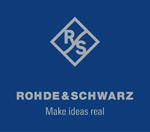


































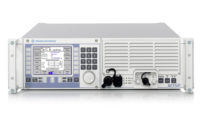
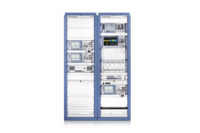
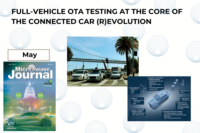

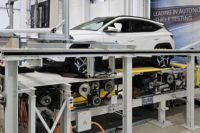
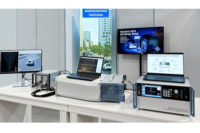

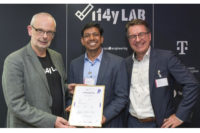
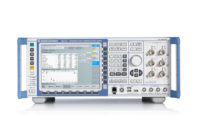
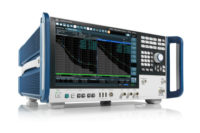
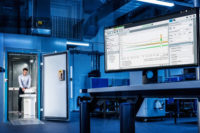
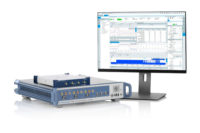

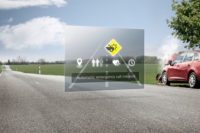
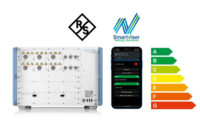
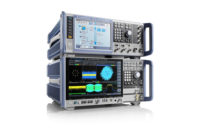
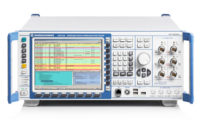
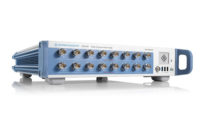
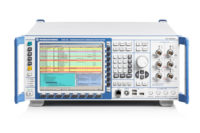


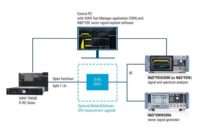

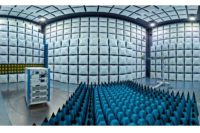

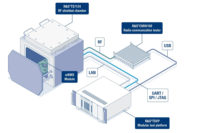

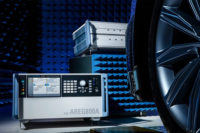
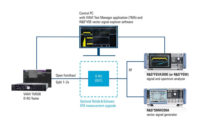
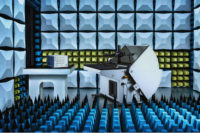
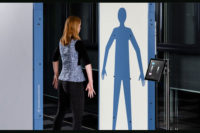
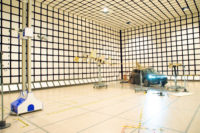
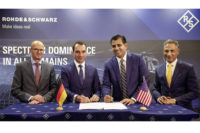
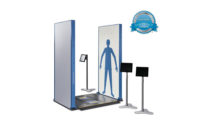

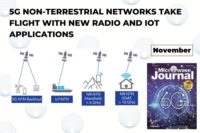

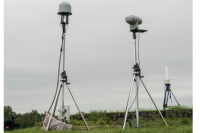

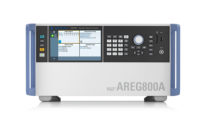
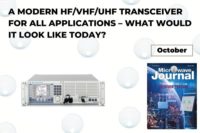
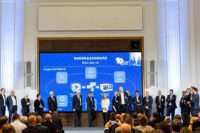
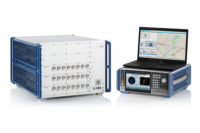
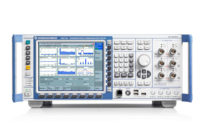
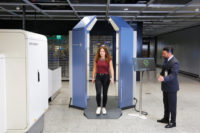
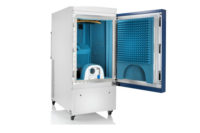
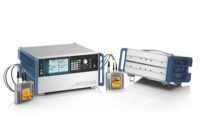
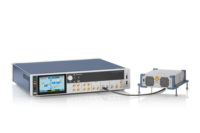
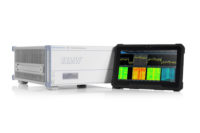


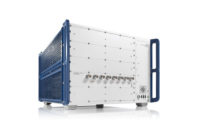
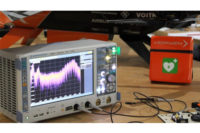
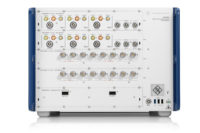
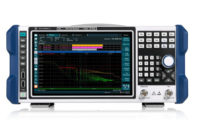

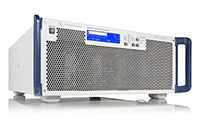
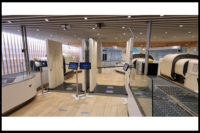
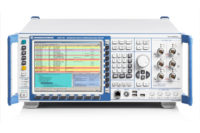
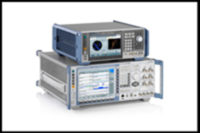

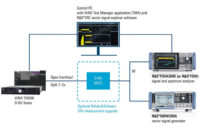
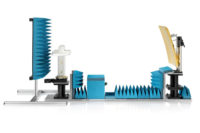
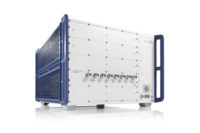
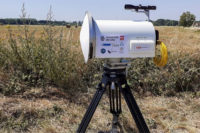
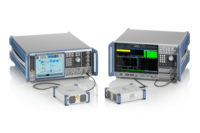
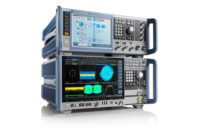

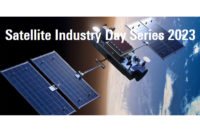
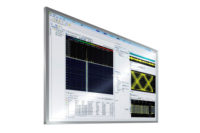
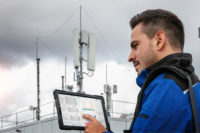
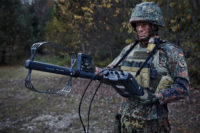
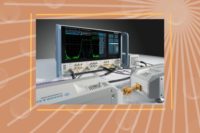
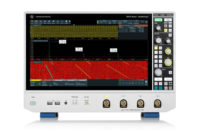
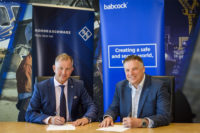
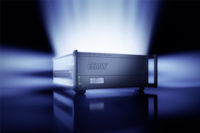

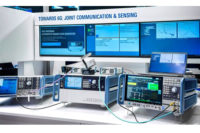


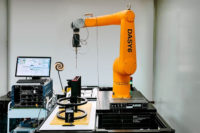
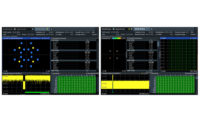
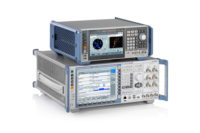
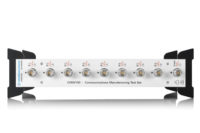
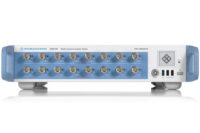
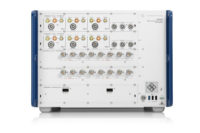





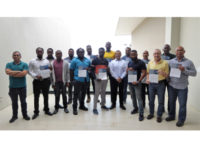

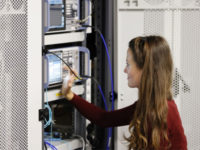
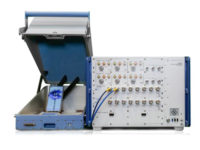


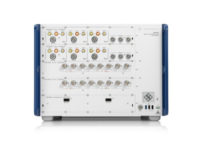
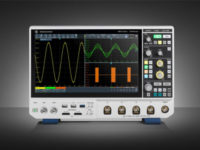


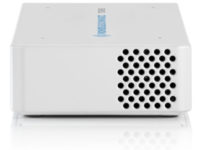
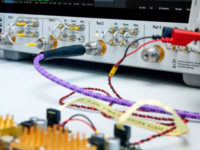
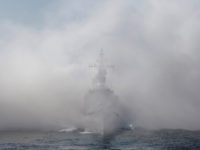
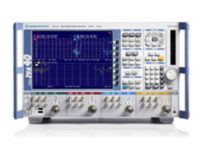
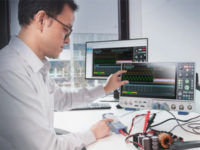
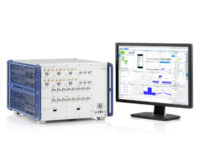

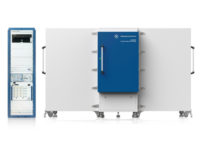
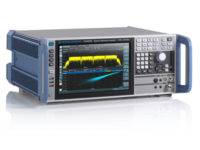

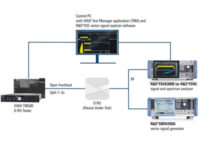

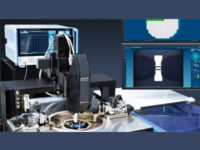
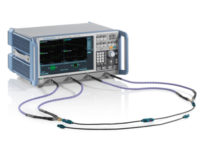
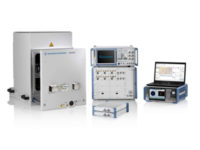
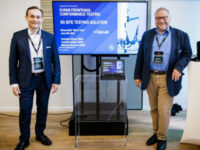
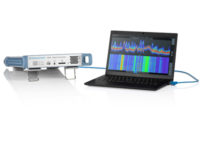

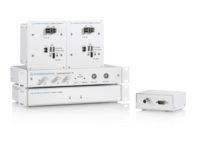
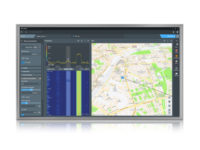

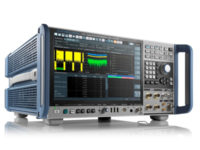
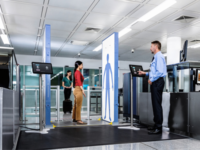

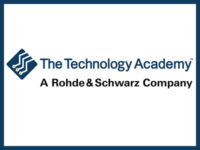
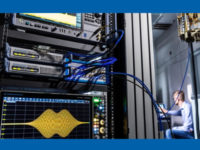

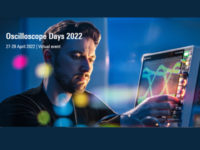
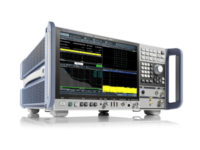
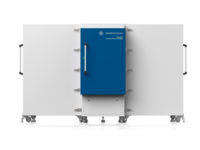
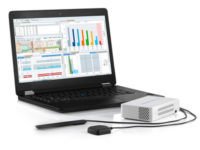


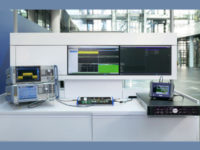
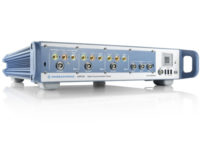
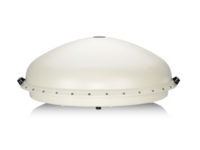

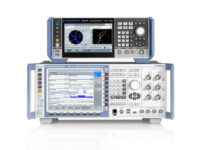

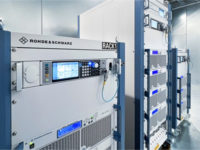
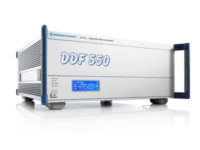

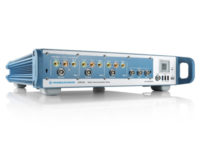
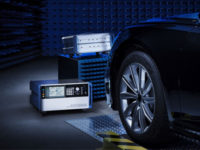
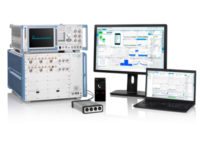

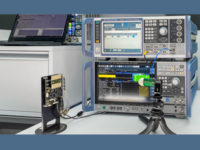
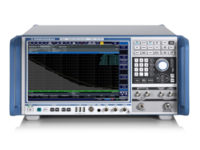
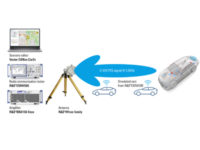
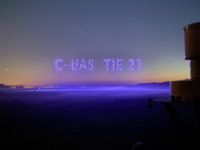


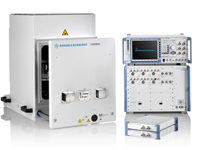

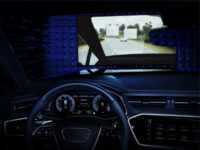
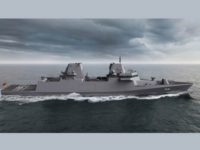

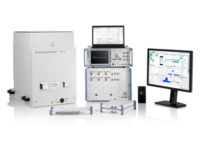
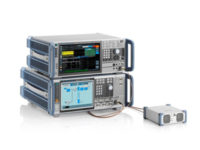


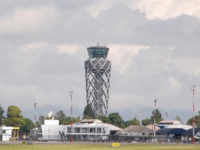


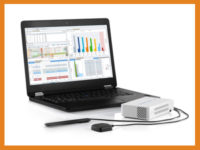
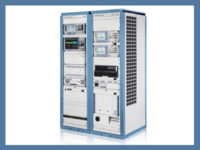
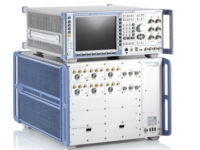




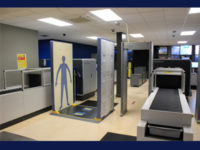
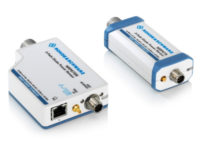

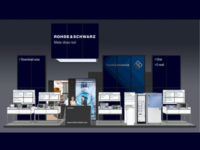



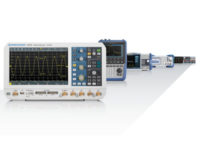
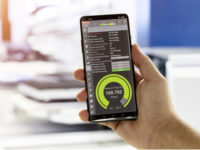
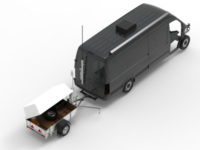

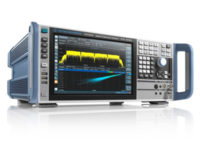
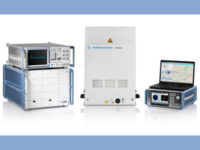

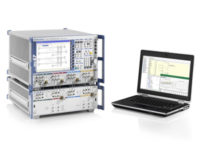
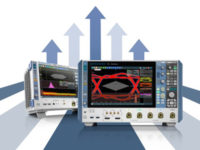
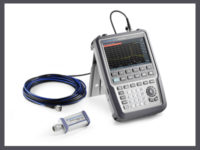
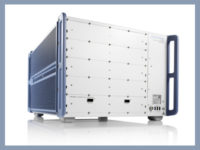
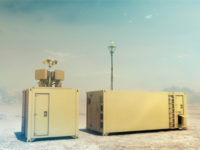
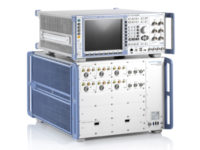
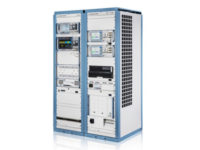
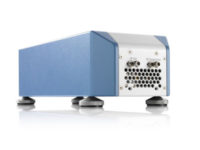
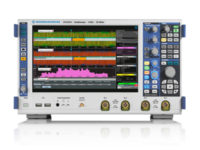

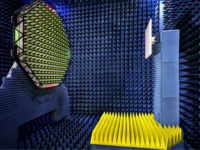
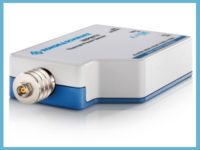
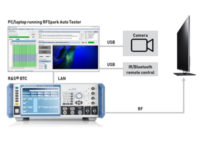
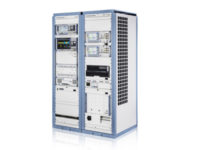
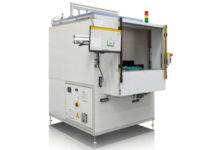
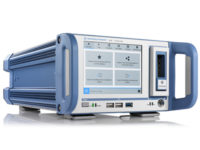
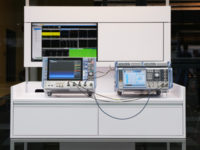
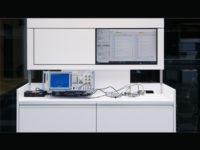
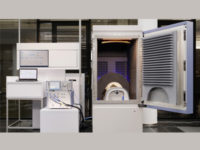
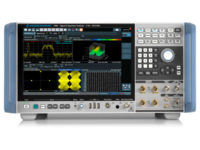
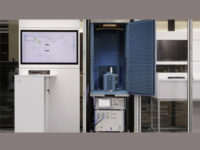
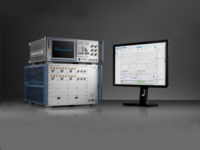

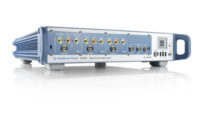
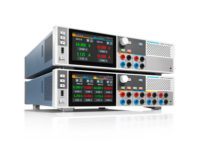
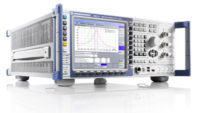
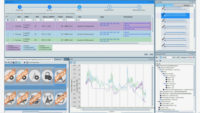
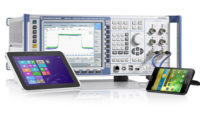
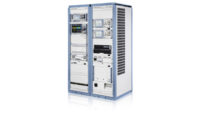
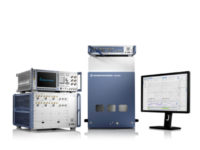
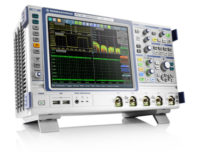
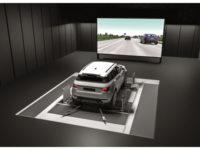
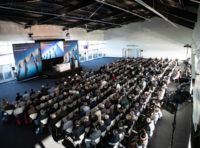
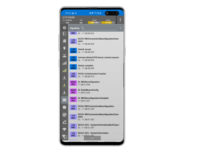
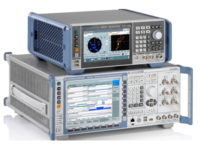
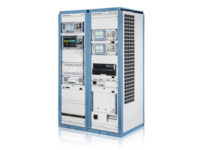
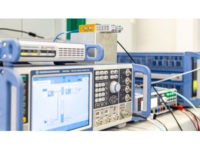
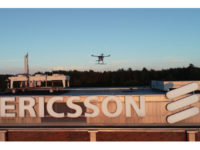
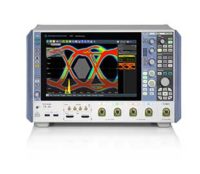
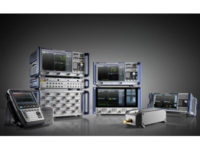

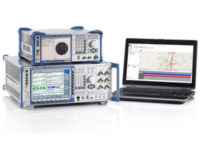
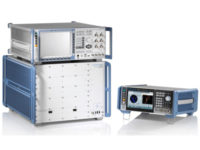
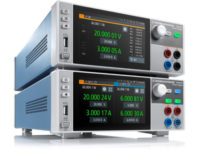
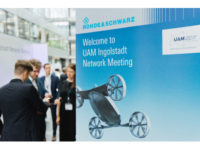
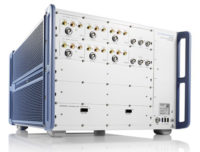

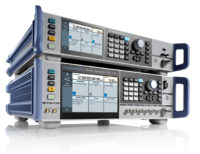

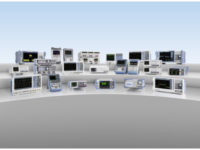
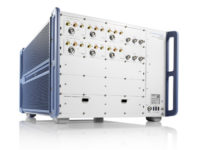
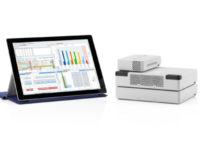
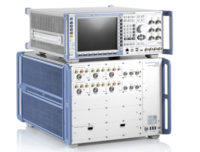
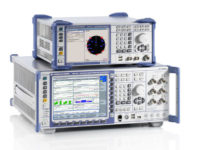

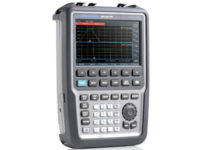

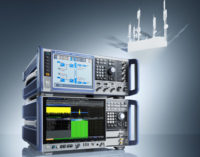

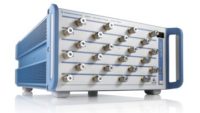

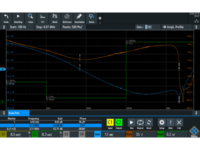
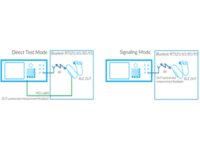

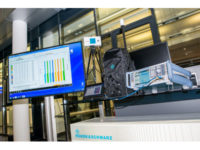

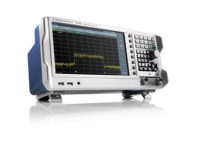

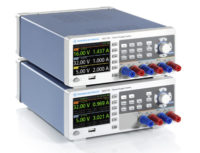
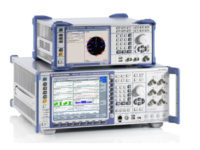
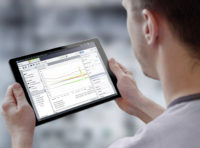
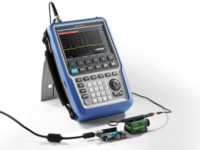
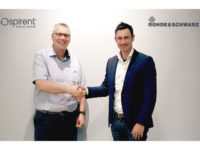
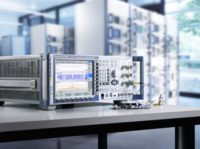
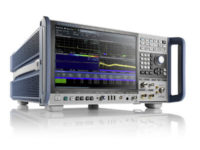
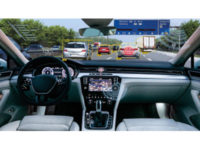


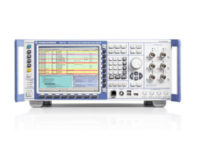




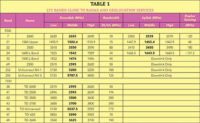
 Rohde & Schwarz mobile network testing has signed an agreement with Samsung that grants preferential RF access and support to current and upcoming Samsung devices.
Rohde & Schwarz mobile network testing has signed an agreement with Samsung that grants preferential RF access and support to current and upcoming Samsung devices. The new R&S RT-ZP1X passive 1:1 probe from Rohde & Schwarz broadens the application range of its R&S RTO and R&S RTE series oscilloscopes. Both the probe and the oscilloscopes' front-end are extremely low noise, making this combination ideal for measuring the smallest of signals down to 1 mV/div, e.g., for power integrity measurements on integrated circuits and components.
The new R&S RT-ZP1X passive 1:1 probe from Rohde & Schwarz broadens the application range of its R&S RTO and R&S RTE series oscilloscopes. Both the probe and the oscilloscopes' front-end are extremely low noise, making this combination ideal for measuring the smallest of signals down to 1 mV/div, e.g., for power integrity measurements on integrated circuits and components. London City Airport has introduced the millimeter wave Quick Personnel Security scanner from Rohde & Schwarz, which will help further increase the speed of security screening and detection at the airport.
London City Airport has introduced the millimeter wave Quick Personnel Security scanner from Rohde & Schwarz, which will help further increase the speed of security screening and detection at the airport. Rohde & Schwarz has successfully demonstrated the generation and analysis of 5G signals based on the characteristics as specified in the Verizon open trial specifications. The R&S SMW200A vector signal generator and the R&S FSW signal and spectrum analyzer both provide outstanding test and measurement capabilities, resulting in an EVM performance of 1 percent when applying these 5G signals.
Rohde & Schwarz has successfully demonstrated the generation and analysis of 5G signals based on the characteristics as specified in the Verizon open trial specifications. The R&S SMW200A vector signal generator and the R&S FSW signal and spectrum analyzer both provide outstanding test and measurement capabilities, resulting in an EVM performance of 1 percent when applying these 5G signals. Rohde & Schwarz has enhanced its proven test solution platforms to include advanced capabilities that are facilitating the research, development and standardization of 5G. The fifth generation of mobile radio will open up new frequency bands for commercial wireless communications in the microwave and millimeter wave ranges to increase date rates on a massive scale.
Rohde & Schwarz has enhanced its proven test solution platforms to include advanced capabilities that are facilitating the research, development and standardization of 5G. The fifth generation of mobile radio will open up new frequency bands for commercial wireless communications in the microwave and millimeter wave ranges to increase date rates on a massive scale.  Rohde & Schwarz was awarded a contract by the Procurement Office of the German Federal Ministry of the Interior for the latest generation of R&S QPS200 security scanners. The three-year framework agreement encompasses 300 systems plus accessories and service.
Rohde & Schwarz was awarded a contract by the Procurement Office of the German Federal Ministry of the Interior for the latest generation of R&S QPS200 security scanners. The three-year framework agreement encompasses 300 systems plus accessories and service. The new R&S RTO-K44 option from Rohde & Schwarz offers powerful triggering and decoding functionality for debugging designs with MIPI M-PHY based protocols. Defined as a physical layer, M-PHY serves as the basis for a number of protocol standards that have been optimized for rapid data transmission in mobile devices.
The new R&S RTO-K44 option from Rohde & Schwarz offers powerful triggering and decoding functionality for debugging designs with MIPI M-PHY based protocols. Defined as a physical layer, M-PHY serves as the basis for a number of protocol standards that have been optimized for rapid data transmission in mobile devices. Rohde & Schwarz has introduced the new R&S FSVA, an enhanced mid range signal and spectrum analyzer for signal analysis and demodulation up to millimeter-wave frequencies.
Rohde & Schwarz has introduced the new R&S FSVA, an enhanced mid range signal and spectrum analyzer for signal analysis and demodulation up to millimeter-wave frequencies. The R&S BBA150 amplifier family's D series is characterized by high power density and appeals especially to the automotive and wireless communications industry. A desktop model of only four height units delivers up to 200 W.
The R&S BBA150 amplifier family's D series is characterized by high power density and appeals especially to the automotive and wireless communications industry. A desktop model of only four height units delivers up to 200 W. Rohde & Schwarz presents the R&S RTO2000, the most compact lab oscilloscope for multi-domain applications. When using it to check advanced embedded designs, developers are able to analyze how sophisticated functional units such as power supplies, the processor system and the sensor technology interact.
Rohde & Schwarz presents the R&S RTO2000, the most compact lab oscilloscope for multi-domain applications. When using it to check advanced embedded designs, developers are able to analyze how sophisticated functional units such as power supplies, the processor system and the sensor technology interact. The R&S Scope Rider from Rohde & Schwarz is equally impressive in the lab and in the field. With an acquisition rate of 50,000 waveforms per second, a 10‑bit A/D converter developed by Rohde & Schwarz and a maximum bandwidth of 500MHz for the analog input channels, this portable oscilloscope clearly outperforms comparable instruments.
The R&S Scope Rider from Rohde & Schwarz is equally impressive in the lab and in the field. With an acquisition rate of 50,000 waveforms per second, a 10‑bit A/D converter developed by Rohde & Schwarz and a maximum bandwidth of 500MHz for the analog input channels, this portable oscilloscope clearly outperforms comparable instruments. The new R&S TS7124 RF shielded box from Rohde & Schwarz provides reliable, reproducible measurement results in a shielded test environment, especially during the production of wireless devices.
The new R&S TS7124 RF shielded box from Rohde & Schwarz provides reliable, reproducible measurement results in a shielded test environment, especially during the production of wireless devices. Rohde & Schwarz Inc., an industry leader in mobile wireless test, has announced that it will demonstrate several key test systems for the development and test of 5G components and systems at this year’s CTIA Super Mobility 2015. These systems will be showcased at the Rohde & Schwarz booth (space #3249) and as part of the CTIA sponsored 5G Innovation Lab (space #4315).
Rohde & Schwarz Inc., an industry leader in mobile wireless test, has announced that it will demonstrate several key test systems for the development and test of 5G components and systems at this year’s CTIA Super Mobility 2015. These systems will be showcased at the Rohde & Schwarz booth (space #3249) and as part of the CTIA sponsored 5G Innovation Lab (space #4315). The new phase noise analyzer and VCO tester from Rohde & Schwarz enables ultrasensitive and ultra-fast phase noise measurements. The R&S FSWP also allows users to very easily measure pulsed sources and residual phase noise of RF components. Plus the instrument can be upgraded to a signal and spectrum analyzer.
The new phase noise analyzer and VCO tester from Rohde & Schwarz enables ultrasensitive and ultra-fast phase noise measurements. The R&S FSWP also allows users to very easily measure pulsed sources and residual phase noise of RF components. Plus the instrument can be upgraded to a signal and spectrum analyzer. Rohde & Schwarz is presenting a novel 5G channel sounding solution in cooperation with Fraunhofer Heinrich Hertz Institute (HHI) at the NGMN Industry Conference in Frankfurt/Main, Germany, which runs from March 24-25, 2015.
Rohde & Schwarz is presenting a novel 5G channel sounding solution in cooperation with Fraunhofer Heinrich Hertz Institute (HHI) at the NGMN Industry Conference in Frankfurt/Main, Germany, which runs from March 24-25, 2015. Rohde & Schwarz presents its new R&S NRPxxS and R&S NRPxxSN USB three-path diode power sensors. The completely redesigned sensors offer unprecedented measurement speed and measurement accuracy, even at low levels.
Rohde & Schwarz presents its new R&S NRPxxS and R&S NRPxxSN USB three-path diode power sensors. The completely redesigned sensors offer unprecedented measurement speed and measurement accuracy, even at low levels. The R&S RTO-K40 MIPI RFFE serial triggering and decoding option from Rohde & Schwarz is a powerful solution that enables developers of RF front ends and modules with RF front end (RFFE) control interface to verify and debug designs and put these components into operation.
The R&S RTO-K40 MIPI RFFE serial triggering and decoding option from Rohde & Schwarz is a powerful solution that enables developers of RF front ends and modules with RF front end (RFFE) control interface to verify and debug designs and put these components into operation.  Rohde & Schwarz has expanded the application field of the R&S RTO oscilloscopes to include the testing of automotive ethernet interfaces.
Rohde & Schwarz has expanded the application field of the R&S RTO oscilloscopes to include the testing of automotive ethernet interfaces.  General Atomics Aeronautical Systems Inc. and Rohde & Schwarz announced that they have signed a Teaming Agreement to integrate and flight demonstrate Rohde & Schwarz's air traffic control radios on the Predator® B/MQ-9 Reaper® RPA.
General Atomics Aeronautical Systems Inc. and Rohde & Schwarz announced that they have signed a Teaming Agreement to integrate and flight demonstrate Rohde & Schwarz's air traffic control radios on the Predator® B/MQ-9 Reaper® RPA. Rohde & Schwarz extends the functionality of the R&S SMBV100A vector signal generator by adding BeiDou/Compass capability to its integrated GNSS simulator.
Rohde & Schwarz extends the functionality of the R&S SMBV100A vector signal generator by adding BeiDou/Compass capability to its integrated GNSS simulator. 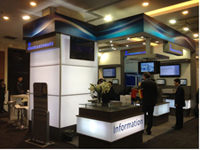
 The R&S SMW200A vector signal generator is the ideal tool for generating the high-quality, complex digitally modulated signals required for the development and verification of today's communications systems.
The R&S SMW200A vector signal generator is the ideal tool for generating the high-quality, complex digitally modulated signals required for the development and verification of today's communications systems. A highlight at the Rohde & Schwarz booth at the electronica trade fair in Munich, Germany is the new R&S ESR EMI test receiver. Thanks to its broadband architecture, it performs standard-compliant disturbance measurements up to 6000 times faster than other solutions.
A highlight at the Rohde & Schwarz booth at the electronica trade fair in Munich, Germany is the new R&S ESR EMI test receiver. Thanks to its broadband architecture, it performs standard-compliant disturbance measurements up to 6000 times faster than other solutions.  Rohde & Schwarz's new R&S ESR test receiver is available in two different models for frequencies ranging from 10 Hz to 3 GHz or 7 GHz to meet the requirements of all users who perform EMC certification on commercial equipment.
Rohde & Schwarz's new R&S ESR test receiver is available in two different models for frequencies ranging from 10 Hz to 3 GHz or 7 GHz to meet the requirements of all users who perform EMC certification on commercial equipment. The Rohde & Schwarz ETC mid-range, multistandard TV analyzer supports the ISDB-T, DVB-T and DVB-T2 digital terrestrial standards.
The Rohde & Schwarz ETC mid-range, multistandard TV analyzer supports the ISDB-T, DVB-T and DVB-T2 digital terrestrial standards.  The new 4 GHz high-performance oscilloscope from Rohde & Schwarz with its 20 Gsample/s sampling rate addresses a wide variety of applications.
The new 4 GHz high-performance oscilloscope from Rohde & Schwarz with its 20 Gsample/s sampling rate addresses a wide variety of applications. China Mobile is using the R&S CMW500 wideband radio communications tester from Rohde & Schwarz in its Research Institute labs to perform RF tests on user equipment for time division LTE (TD-LTE). The intention is for Rohde & Schwarz’s TD-LTE cooperation with the Chinese mobile radio network operator to continue on a long-term basis.
China Mobile is using the R&S CMW500 wideband radio communications tester from Rohde & Schwarz in its Research Institute labs to perform RF tests on user equipment for time division LTE (TD-LTE). The intention is for Rohde & Schwarz’s TD-LTE cooperation with the Chinese mobile radio network operator to continue on a long-term basis. Introduction to a mid-range signal analyzer with up to 40 MHz of analysis bandwidth and more than 1000 sweeps per second
Introduction to a mid-range signal analyzer with up to 40 MHz of analysis bandwidth and more than 1000 sweeps per second



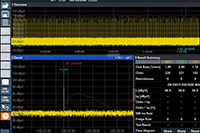
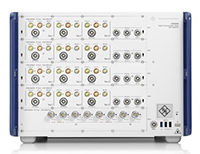
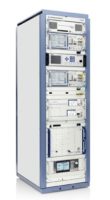
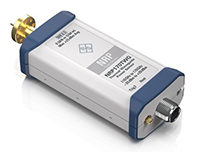
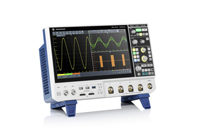
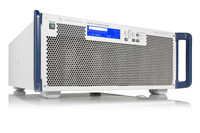
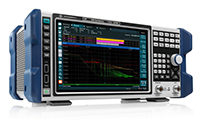
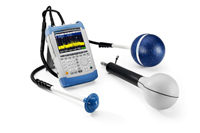
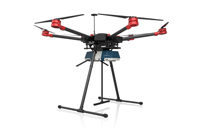
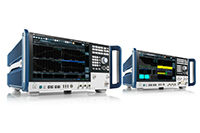

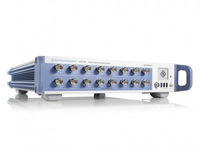
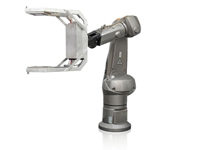

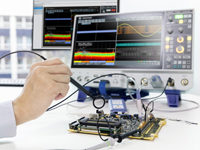
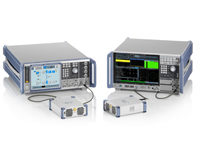
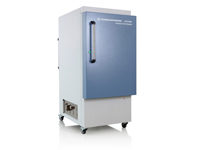
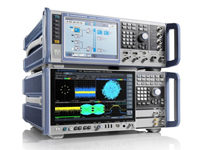
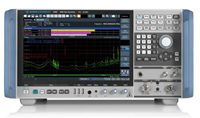
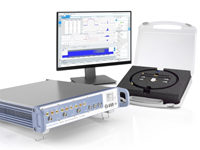
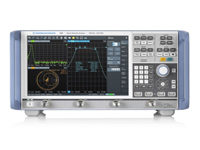
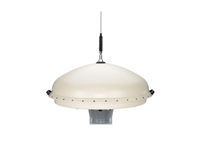

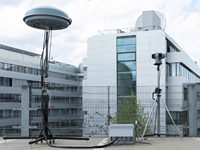
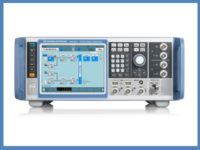
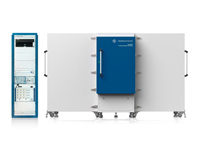
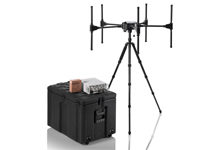

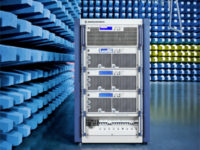
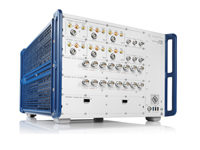
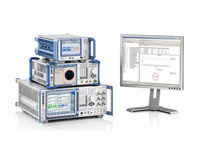
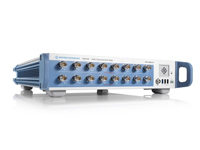

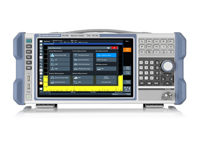
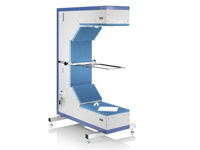
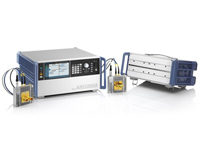
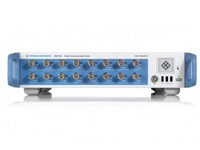
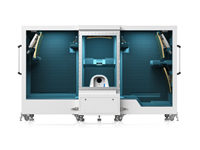
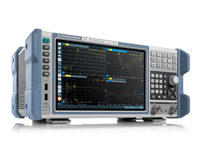
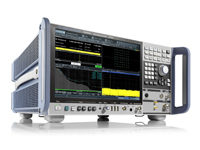
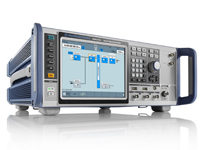
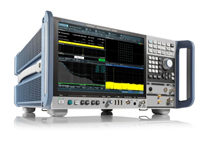
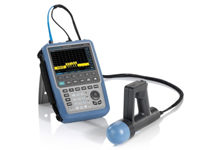
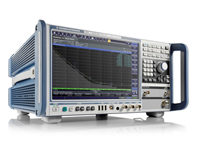
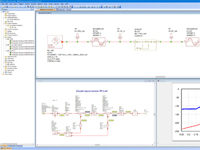
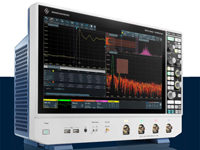
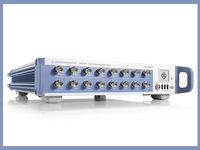
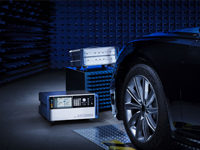
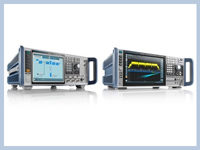
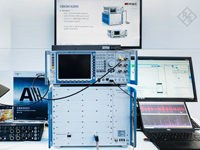
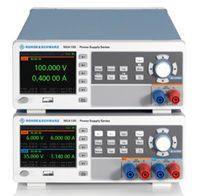

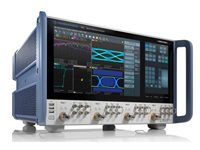
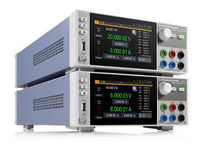
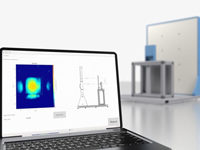
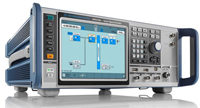
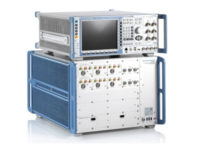
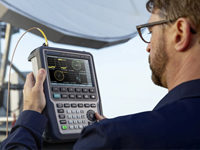
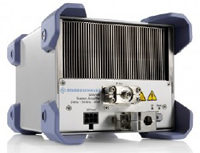
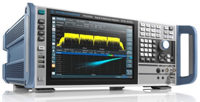
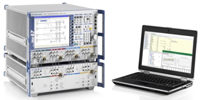
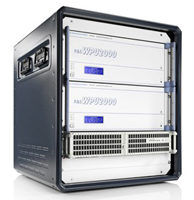

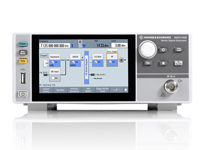
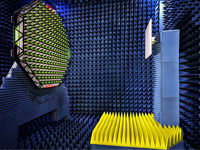
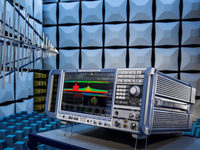
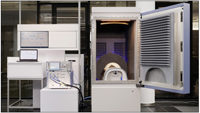
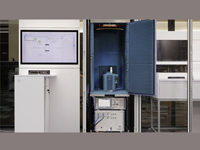
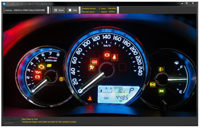
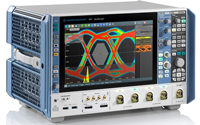
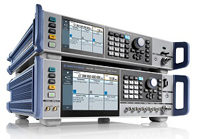
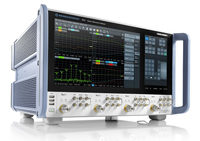
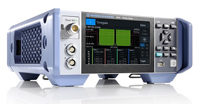
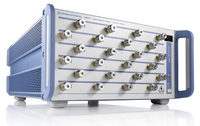
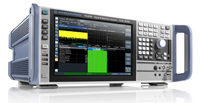
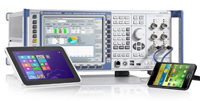
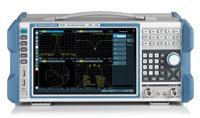



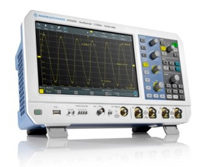
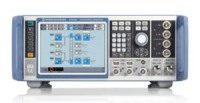
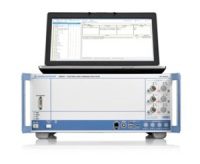
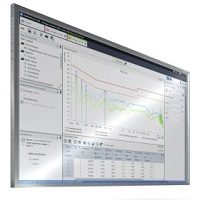
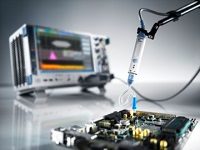
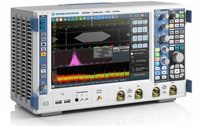
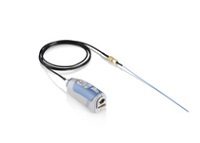
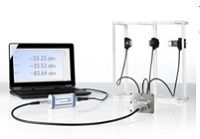
 Rohde & Schwarz has successfully demonstrated the generation and analysis of 5G signals based on the characteristics as specified in the Verizon open trial specifications. The R&S SMW200A vector signal generator and the R&S FSW signal and spectrum analyzer both provide outstanding test and measurement capabilities, resulting in an EVM performance of 1 percent when applying these 5G signals.
Rohde & Schwarz has successfully demonstrated the generation and analysis of 5G signals based on the characteristics as specified in the Verizon open trial specifications. The R&S SMW200A vector signal generator and the R&S FSW signal and spectrum analyzer both provide outstanding test and measurement capabilities, resulting in an EVM performance of 1 percent when applying these 5G signals. Rohde & Schwarz has introduced the R&S FSVA, an enhanced mid range signal and spectrum analyzer for signal analysis and demodulation up to millimeter-wave frequencies. Users benefit from the features of this instrument in all measurements up to 40 GHz where low phase noise, high sensitivity and wide analysis bandwidth are required. R&S FSVA offers a 160 MHz analysis bandwidth over its entire frequency range.
Rohde & Schwarz has introduced the R&S FSVA, an enhanced mid range signal and spectrum analyzer for signal analysis and demodulation up to millimeter-wave frequencies. Users benefit from the features of this instrument in all measurements up to 40 GHz where low phase noise, high sensitivity and wide analysis bandwidth are required. R&S FSVA offers a 160 MHz analysis bandwidth over its entire frequency range. The new R&S TS7124 RF shielded box from Rohde & Schwarz offers the best shielding effectiveness, the largest interior dimensions and the most flexible antenna configurations in its class. It provides reliable, reproducible measurement results in a shielded test environment, especially during the production of wireless devices. Unique in its class, the R&S TS7124 offers shielding in excess of 80 dB at 6 GHz. Its frequency range from 300 MHz to 6 GHz.
The new R&S TS7124 RF shielded box from Rohde & Schwarz offers the best shielding effectiveness, the largest interior dimensions and the most flexible antenna configurations in its class. It provides reliable, reproducible measurement results in a shielded test environment, especially during the production of wireless devices. Unique in its class, the R&S TS7124 offers shielding in excess of 80 dB at 6 GHz. Its frequency range from 300 MHz to 6 GHz. R&S CMW290 functional radio communication tester from Rohde & Schwarz is the right solution for users who want to integrate wireless modules into their platforms and test them. For end-to-end testing of applications, the R&S CMW290 can simulate a cellular network and set up a connection between the application on the device or system and the server. IMS server, audio or eCall/ERA-Glonass functionality are also available for the R&S CMW290.
R&S CMW290 functional radio communication tester from Rohde & Schwarz is the right solution for users who want to integrate wireless modules into their platforms and test them. For end-to-end testing of applications, the R&S CMW290 can simulate a cellular network and set up a connection between the application on the device or system and the server. IMS server, audio or eCall/ERA-Glonass functionality are also available for the R&S CMW290.  The R&S FSWP phase noise analyzer and VCO tester from Rohde & Schwarz enables ultrasensitive and ultra-fast phase noise measurements. It also allows users to measure the spectral purity of signal sources such as generators, synthesizers, high-end oscillators (OCXO, DRO, …) and voltage-controlled oscillators (VCO) more quickly than with any other solution. The high-end instrument covers a frequency range up to 26 GHz and offers a top dynamic range.
The R&S FSWP phase noise analyzer and VCO tester from Rohde & Schwarz enables ultrasensitive and ultra-fast phase noise measurements. It also allows users to measure the spectral purity of signal sources such as generators, synthesizers, high-end oscillators (OCXO, DRO, …) and voltage-controlled oscillators (VCO) more quickly than with any other solution. The high-end instrument covers a frequency range up to 26 GHz and offers a top dynamic range. The completely redesigned R&S NRPxxS and R&S NRPxxSN USB three-path diode power sensors offer unprecedented measurement speed and accuracy, even at low levels. The sensors enable 10,000 triggered measurements per second with a minimum trigger resolution of 100 µs. A special mode permits 50,000 equidistant measurements per second. The improved design decreased the lower measurement limit to -70 dBm, resulting in a very wide dynamic range of 93 dB.
The completely redesigned R&S NRPxxS and R&S NRPxxSN USB three-path diode power sensors offer unprecedented measurement speed and accuracy, even at low levels. The sensors enable 10,000 triggered measurements per second with a minimum trigger resolution of 100 µs. A special mode permits 50,000 equidistant measurements per second. The improved design decreased the lower measurement limit to -70 dBm, resulting in a very wide dynamic range of 93 dB. With its new microwave frequency options, the R&S SMW200A vector signal generator supports development applications requiring complex multichannel scenarios up to 40 GHz. It is the only instrument on the market to combine a baseband generator and RF generator with fading, AWGN and MIMO capabilities in a single box. It can be used for radar and satellite component and module tests as well as for future 5G technology development.
With its new microwave frequency options, the R&S SMW200A vector signal generator supports development applications requiring complex multichannel scenarios up to 40 GHz. It is the only instrument on the market to combine a baseband generator and RF generator with fading, AWGN and MIMO capabilities in a single box. It can be used for radar and satellite component and module tests as well as for future 5G technology development. Rohde & Schwarz has expanded its family of R&S RTE oscilloscopes to include two- and four-channel models with 1.5 and 2 GHz bandwidth. The T&M expert now offers the broadest selection of products in this class, with bandwidths ranging from 200 MHz to 2 GHz. Customers can utilize the full bandwidth of an instrument on all available channels simultaneously.
Rohde & Schwarz has expanded its family of R&S RTE oscilloscopes to include two- and four-channel models with 1.5 and 2 GHz bandwidth. The T&M expert now offers the broadest selection of products in this class, with bandwidths ranging from 200 MHz to 2 GHz. Customers can utilize the full bandwidth of an instrument on all available channels simultaneously. Rohde & Schwarz has been continuously enhancing its R&S IQR100 digital I/Q data recorder. A new firmware update now provides users with a data rate of nearly 100 Msample/s instead of the original 66 Msample/s. The R&S IQR100 digital I/Q data recorder from Rohde & Schwarz can now record, store and play I/Q signals with bandwidths up to 79.6 MHz -- loss-free in realtime.
Rohde & Schwarz has been continuously enhancing its R&S IQR100 digital I/Q data recorder. A new firmware update now provides users with a data rate of nearly 100 Msample/s instead of the original 66 Msample/s. The R&S IQR100 digital I/Q data recorder from Rohde & Schwarz can now record, store and play I/Q signals with bandwidths up to 79.6 MHz -- loss-free in realtime. Rohde & Schwarz has expanded the frequency range of its R&S SMW200A high-end vector signal generator to 20 GHz. The R&S SMW200A is the only instrument on the market to combine a baseband generator, RF generator and fading simulator in a single box. The SMW200A makes it possible to generate two wideband signals with any type of modulation up to 20 GHz using a single device.
Rohde & Schwarz has expanded the frequency range of its R&S SMW200A high-end vector signal generator to 20 GHz. The R&S SMW200A is the only instrument on the market to combine a baseband generator, RF generator and fading simulator in a single box. The SMW200A makes it possible to generate two wideband signals with any type of modulation up to 20 GHz using a single device.
 The new Rohde & Schwarz transmitters feature outstanding efficiency, compact design and flexible configurations. They fulfill the demands of the market in the best possible way. The Tx9 transmitter portfolio now covers the frequency bands II, III, IV and V.
The new Rohde & Schwarz transmitters feature outstanding efficiency, compact design and flexible configurations. They fulfill the demands of the market in the best possible way. The Tx9 transmitter portfolio now covers the frequency bands II, III, IV and V. Looking for a vector signal generator to master even the toughest challenges? The R & S® SMW200A represents the very best of today’s possibilities. It is the perfect tool for creating high-quality complex digitally modulated signals, for instance when developing new broadband communications systems, verifying 3 or 4 G base stations or for the aerospace and defense sectors.
Looking for a vector signal generator to master even the toughest challenges? The R & S® SMW200A represents the very best of today’s possibilities. It is the perfect tool for creating high-quality complex digitally modulated signals, for instance when developing new broadband communications systems, verifying 3 or 4 G base stations or for the aerospace and defense sectors. Rohde & Schwarz has doubled the analysis bandwidth of its high-end R&S FSW signal and spectrum analyzer from 160 MHz to 320 MHz. The R&S FSW is currently the only signal and spectrum analyzer on the market able to process signals in this bandwidth. This gives the analyzer a competitive edge in a variety of applications related to wideband digital communications and radar systems.
Rohde & Schwarz has doubled the analysis bandwidth of its high-end R&S FSW signal and spectrum analyzer from 160 MHz to 320 MHz. The R&S FSW is currently the only signal and spectrum analyzer on the market able to process signals in this bandwidth. This gives the analyzer a competitive edge in a variety of applications related to wideband digital communications and radar systems.  R&S RTO features an impressive low-noise frontend, high dynamic range ADC, high acquisition and analysis rate and a digital trigger system with extremely low trigger jitter. In addition to automatic jitter measurements, the R&S RTO-K12 jitter analysis option offers a wide range of intelligent functions.
R&S RTO features an impressive low-noise frontend, high dynamic range ADC, high acquisition and analysis rate and a digital trigger system with extremely low trigger jitter. In addition to automatic jitter measurements, the R&S RTO-K12 jitter analysis option offers a wide range of intelligent functions. Power analysis requires that users measure voltage and current. For this purpose, Rohde & Schwarz offers high end voltage and current probes and now also the new R&S RT-ZF20 deskew fixture. The deskew fixture makes it easy to measure delay differences, which can then be corrected in the oscilloscope.
Power analysis requires that users measure voltage and current. For this purpose, Rohde & Schwarz offers high end voltage and current probes and now also the new R&S RT-ZF20 deskew fixture. The deskew fixture makes it easy to measure delay differences, which can then be corrected in the oscilloscope. Rohde & Schwarz adds the R&S BBA150 for the microwave range to its EMC portfolio. These compact, lightweight amplifiers with their state-of-the-art design are optimized for high frequencies starting at 0.8 GHz. Depending on the setup, the R&S BBA150 can be manually operated via its display and buttons or it can automatically control via a remote control interface or a web browser.
Rohde & Schwarz adds the R&S BBA150 for the microwave range to its EMC portfolio. These compact, lightweight amplifiers with their state-of-the-art design are optimized for high frequencies starting at 0.8 GHz. Depending on the setup, the R&S BBA150 can be manually operated via its display and buttons or it can automatically control via a remote control interface or a web browser.  A product must pass the USB Implementers Forum's compliance tests (USB-IF compliance program). Rohde & Schwarz meets this need with the R&S RTO-K21 USB 2.0 compliance test software for its R&S RTO high-performance oscilloscope. This software offers scenarios for testing USB 2.0 devices (DUT) when functioning as a device, host or hub.
A product must pass the USB Implementers Forum's compliance tests (USB-IF compliance program). Rohde & Schwarz meets this need with the R&S RTO-K21 USB 2.0 compliance test software for its R&S RTO high-performance oscilloscope. This software offers scenarios for testing USB 2.0 devices (DUT) when functioning as a device, host or hub.